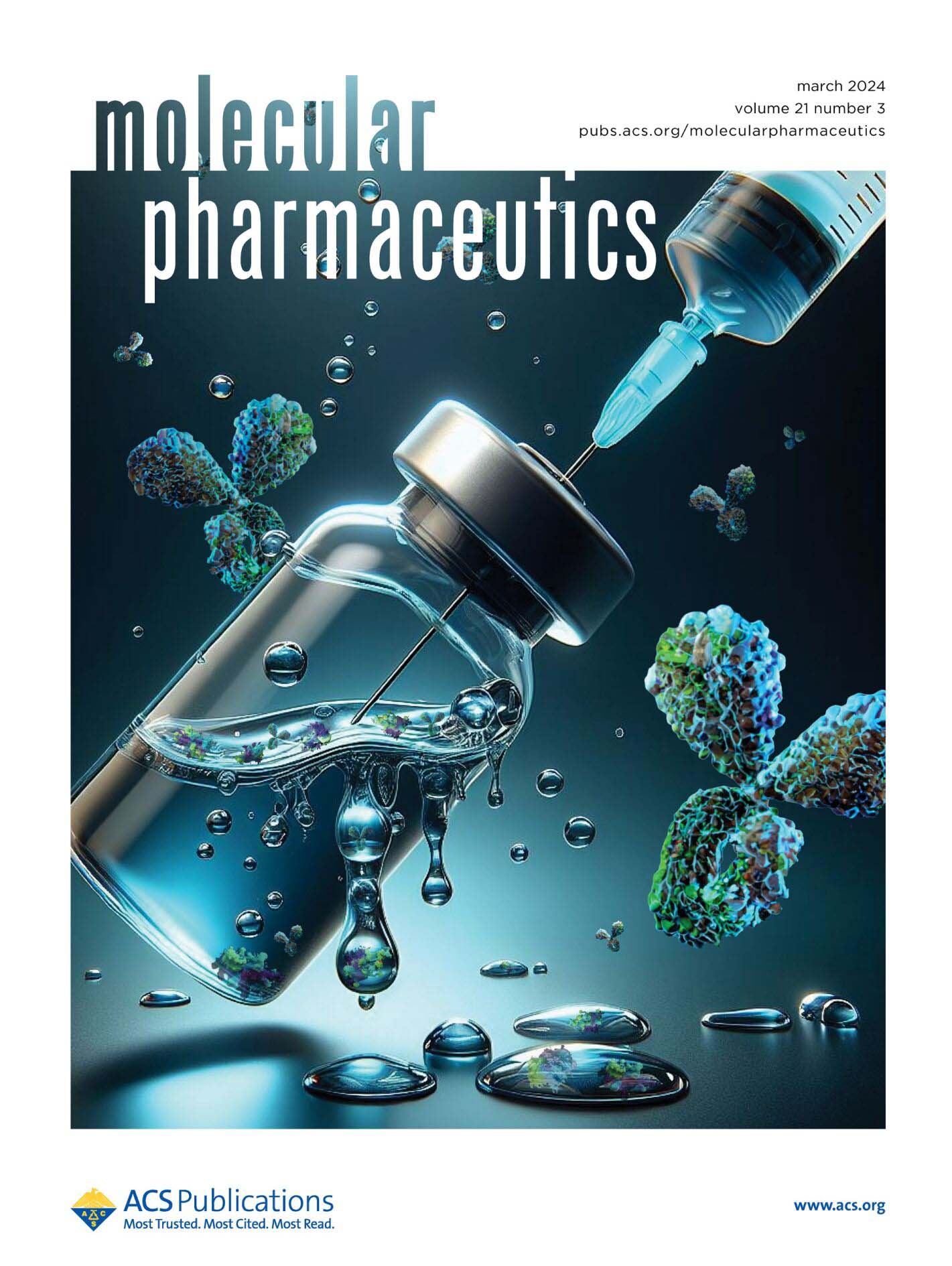ACS Molecular Pharmaceutics March 2024

“Correlating Surface Activity with Interface-Induced Aggregation in a HighConcentration mAb Solution”
Featuring Estephanie L. N. Escobar, Valerie P. Griffin and Prajnaparamita Dhar
Abstract
Interface-induced aggregation resulting in protein particle formation is an issue during the manufacturing and storage of protein-based therapeutics. High-concentration formulations of therapeutic proteins are even more prone to protein particle formation due to increased protein–protein interactions. However, the dependence of interface-induced protein particle formation on bulk protein concentration is not understood. Furthermore, the formation of protein particles is often mitigated by the addition of polysorbate-based surfactants. However, the details of surfactant-protein interactions that prevent protein particle formation at high concentrations remain unclear. In this work, a tensiometer technique was used to evaluate the surface pressure of an industrially relevant mAb at different bulk concentrations, and in the absence and presence of a polysorbate-based surfactant, polysorbate 20 (PS20). The adsorption kinetics was correlated with subvisible protein particle formation at the air–water interface and in the bulk protein solution using a microflow imaging technique. Our results showed that, in the absence of any surfactant, the number of subvisible particles in the bulk protein solutions increased linearly with mAb concentration, while the number of protein particles measured at the interface showed a logarithmic dependence on bulk protein concentration. In the presence of surfactants above the critical micelle concentration (CMC), our results for low-concentration mAb solutions (10 mg/mL) showed an interface that is surfactant-dominated, and particle characterization results showed that the addition of the surfactant led to reduced particle formation. In contrast, for the highest concentration (170 mg/mL), coadsorption of proteins and surfactants was observed at the air–water interface, even for surfactant formulations above CMC and the surfactant did not mitigate subvisible particle formation. Our results taken together provide evidence that the ratio between the surfactant and mAb molecules is an important consideration when formulating highconcentration mAb therapeutics to prevent unwanted aggregation
Citations
Mol. Pharmaceutics 2024, 21, 3, 1490–1500